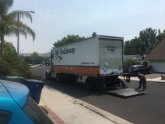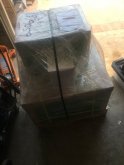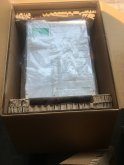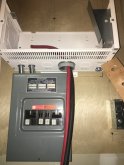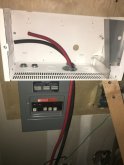The guy who is going to install my system likes Enphase micro inverters. And I was thinking I would just put them on all the panels. I have a little shading and I think I might have to put a few panels at different angles. But I wondered if it was better to charge the battery with DC instead of converting it back and forth.
Enphase does have a great product. After all my research, I went with them, I do have a small shading issue now, I had a bad on at the end of last year, I ended up cutting down 3 palm trees that just grew way too fast. Even with horrible shading, 3/4 of my array was still producing full power with the separate inverters. The micros are the most efficient and putting the solar power into your house. The only issue is if you produce more than you use, it is going out the grid. Not a big deal, I have been doing that for a year, and you do get some credit for it. And of course, you have no backup power in the grid fails.
This is where the hybrid setup comes in. How often do you have a power failure? Is there a reason to think it will get worse? How much power will you need during a power failure? And how long will you need the power for?
There are a few different off grid power calculator to help figure out the load you need to supply. I went with a bigger inverter so I have room to grow if this does end up being more important. I figured I would need at least 10 KwH of storage to make it worth doing. For less than the cost of the Enphase Encharge10, I am getting 17 KwH's of surplus batteries and all the gear to connect the system including the Schneider XW-Pro inverter. But I have to do a lot of the engineering myself. There are contractors that will do this for you, but you will be paying there time to work it out as well. If your power rarely fails, can you get by with a UPS to run the fridge? Do you want to be able to back feed the grid off your battery bank? I almost went with a Schneider SW, they have a 4000 watt unit for less than half the price, but it can't ever push power out the input terminals, it will only feed your essential load panel. If you expect to run off the batteries often, then a DC coupled system will be more efficient. Panels to battery, then one inverter to loads. The solar to micro inverter to loads is more efficient to just power the loads directly. But if it has to go Solar, to micro to AC, then AC to DC to battery, the again, battery DC to AC to loads, there is more loss. When my grid is up, I expect to move less than 1/3 of my power to the battery when I am making more than I use. So most of my power is straight from the Enphase micros. The XW is a huge UPS unit for when the power fails. The 5 to 10 KwH's I can store and use later each day is just a bonus to help offset the cost.
I tend to over think and research things to death before I spend this kind of money. It all depends on your own use case and how important each function is and if the cost for that function is worth it. When I first planned the solar, I really didn't think storage was going to be a big deal, and I had hoped the Enphase batteries would do the job if I decided I wanted them later. In a year and a half, things changed a lot. The power pricing changed on me, and late last year they started the "Public Safety Power Shutoff" to try and reduce fire hazards. Then toss in a pandemic and riots, and now I want a little more security for my power. I really wanted to go with Enphase Ensemble, but the numbers just didn't work out right for me. The sale on the XW at Real Good (altE store) and the deal on the batteries made the choice easier.



